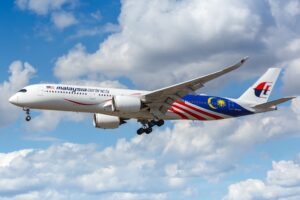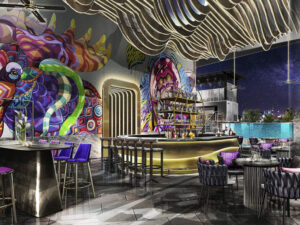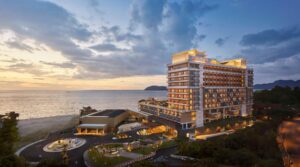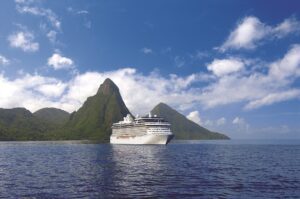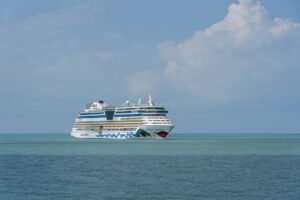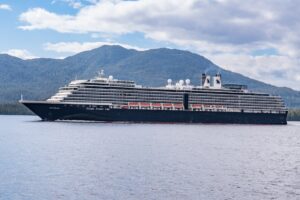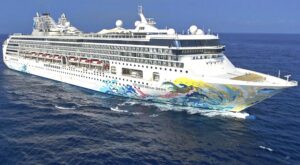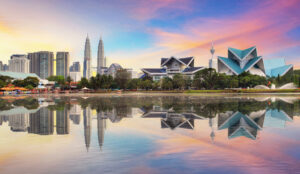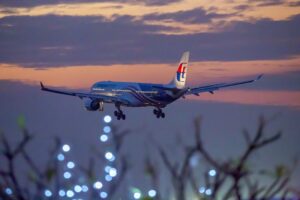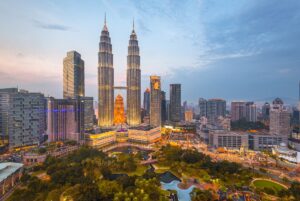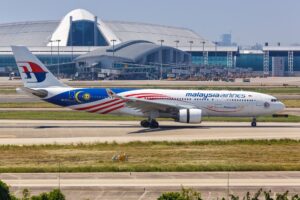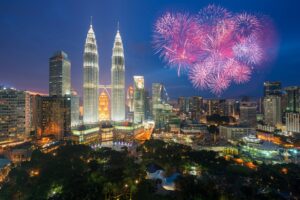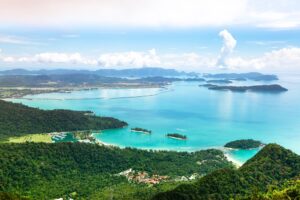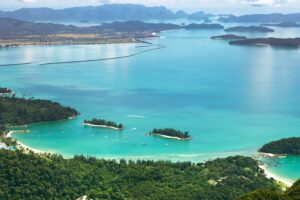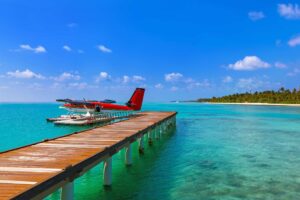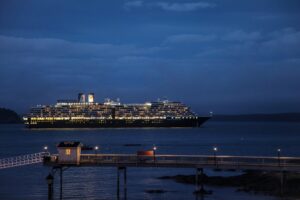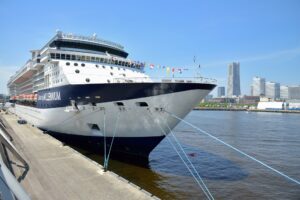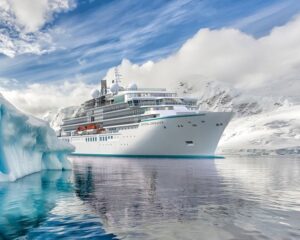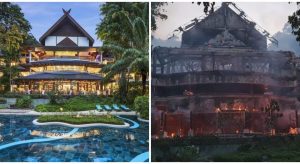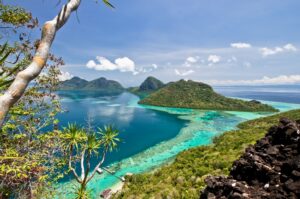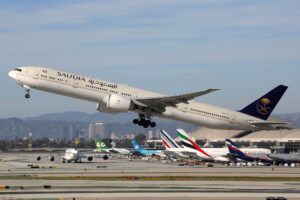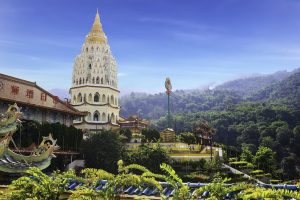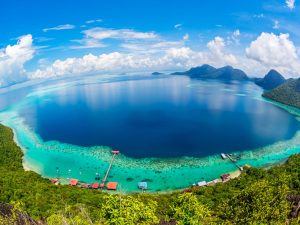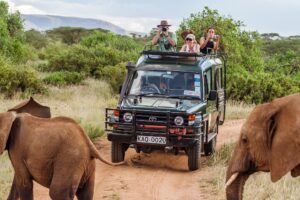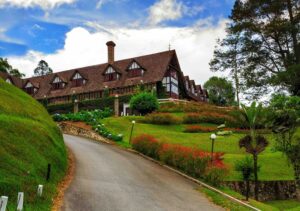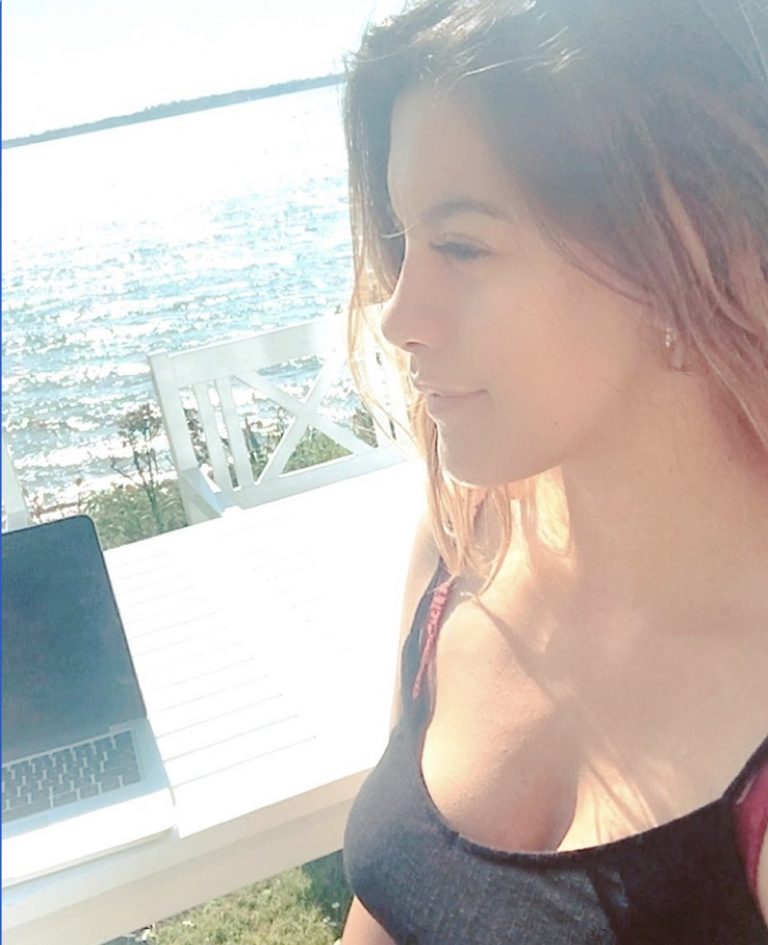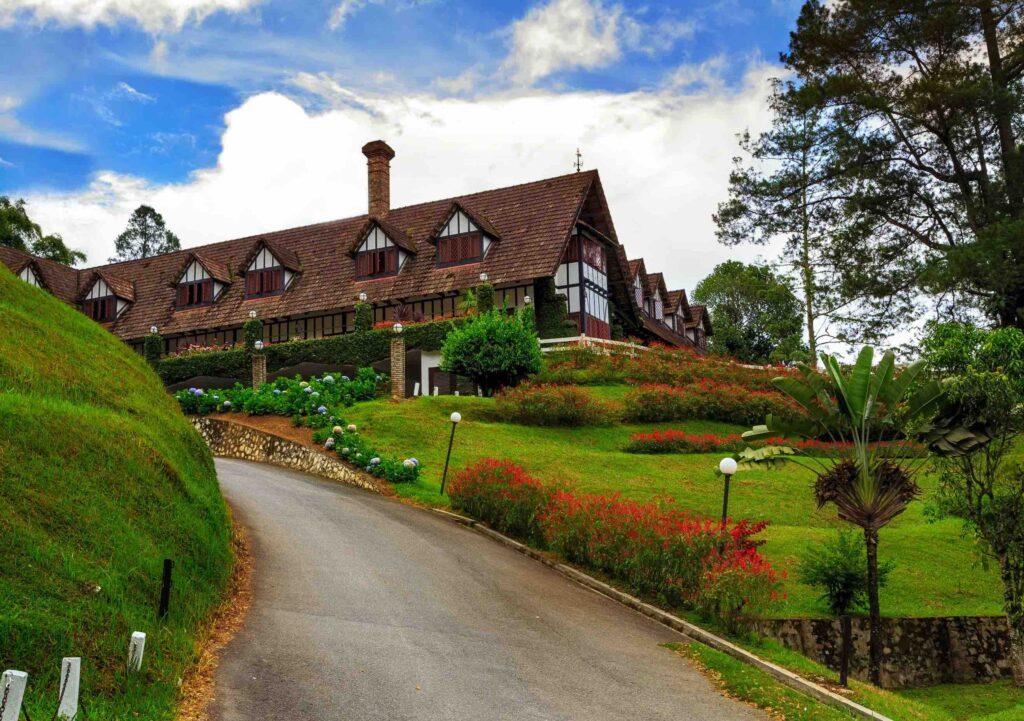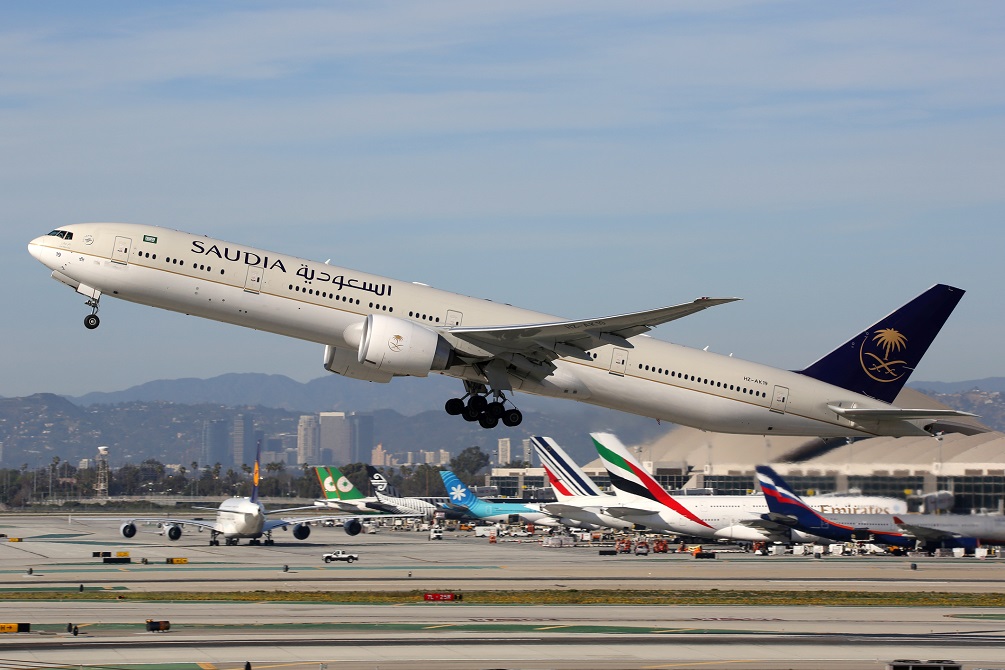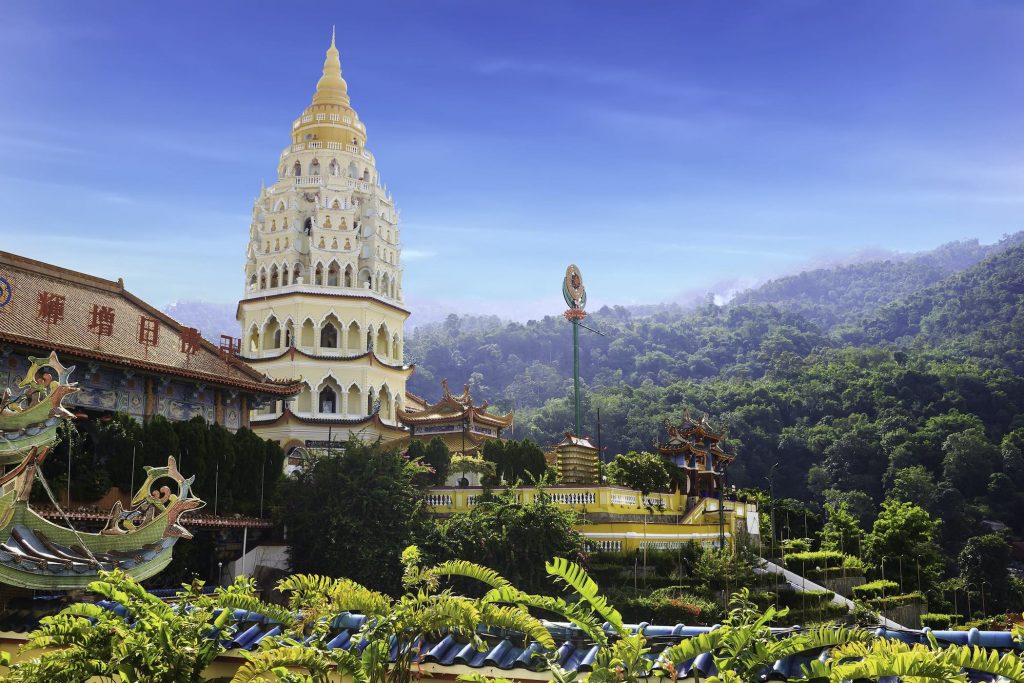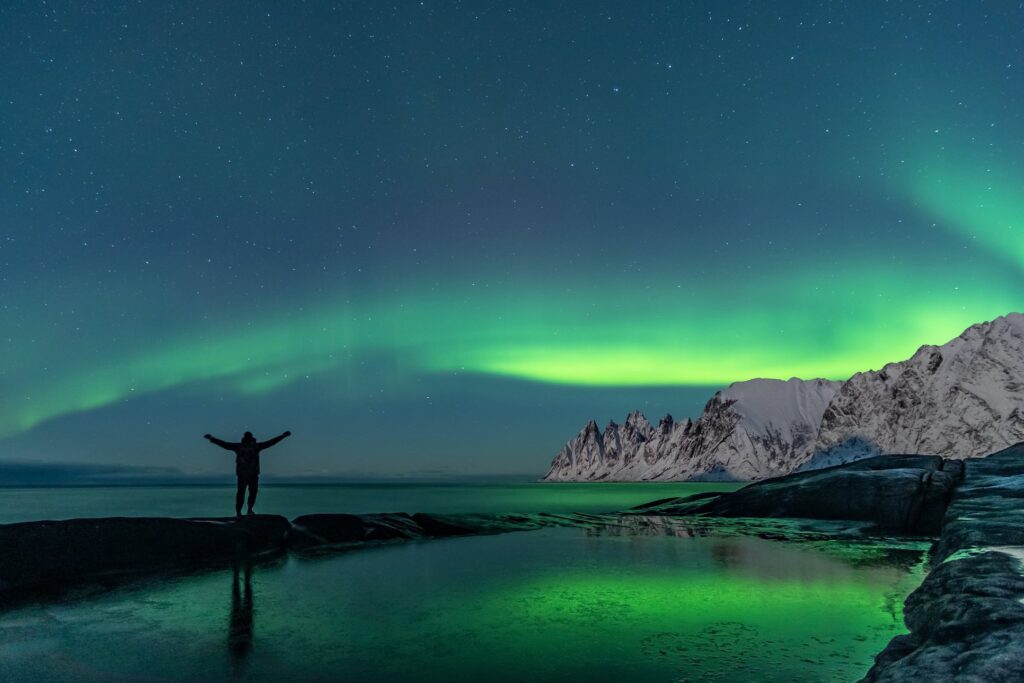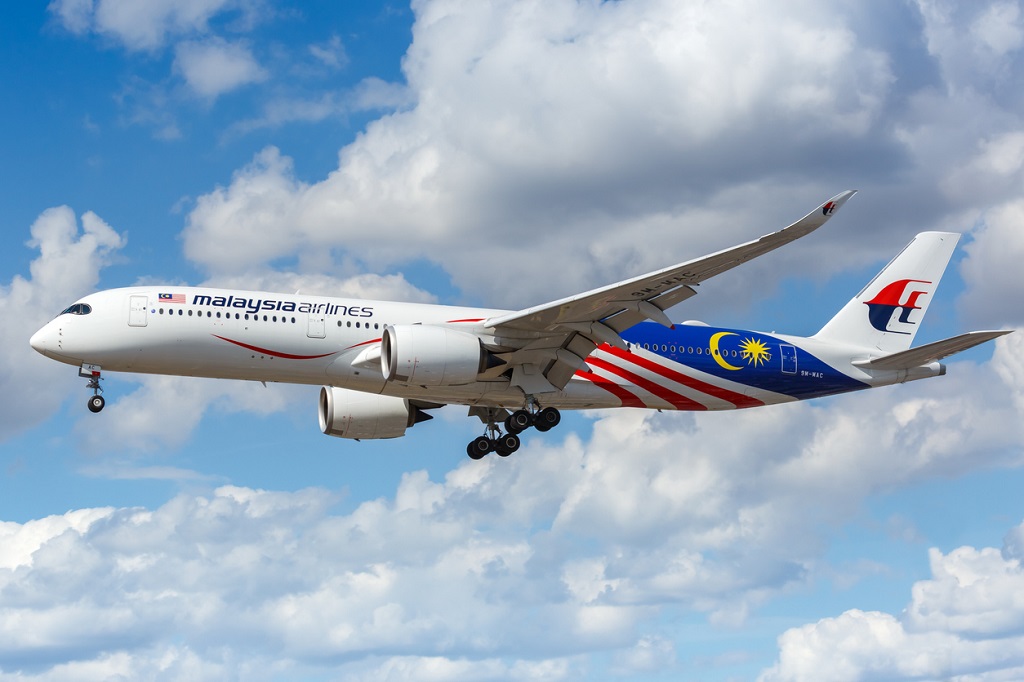Malaysia
A melting pot of cultures, traditions, and customs, Malaysia magically blends the best of Asia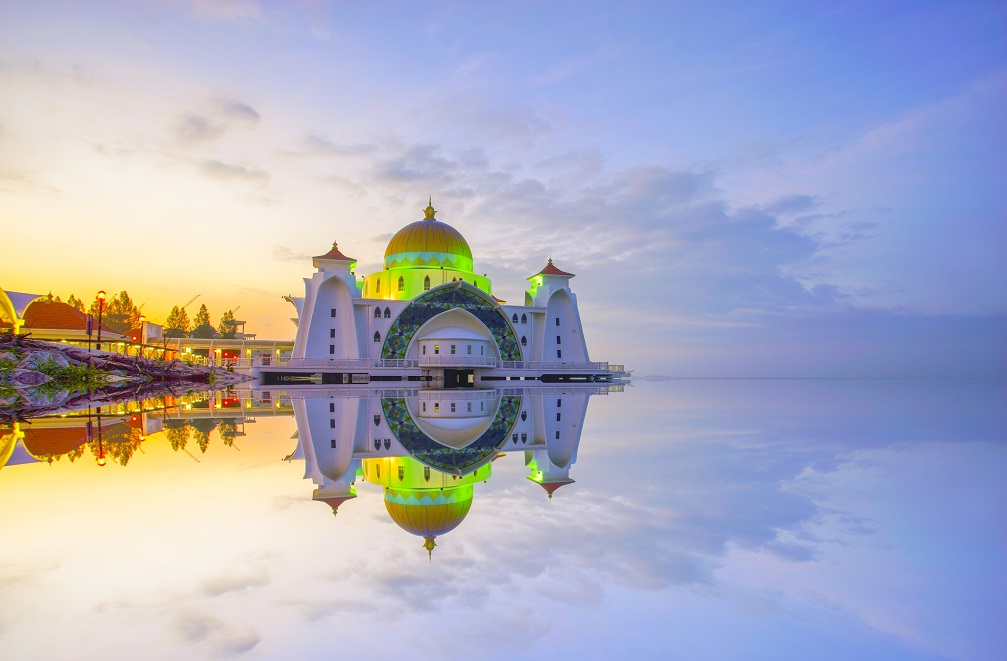
Malacca Straits Mosque ( Masjid Selat Melaka), It is a mosque located on the man-made Malacca Island near Malacca Town, Malaysia
‘Malaysia, Truly Asia’ is not just a clever tourism slogan but captures the cultural diversity of this Southeast Asian nation which in many ways is a microcosm of Asia. Many communities and peoples – from Malays and Chinese to Indians and indigenous groups – live in peaceful coexistence here, enriching the cultural, linguistic, and religious traditions and cuisines of this diverse land. As a traveler to Malaysia, you will be spoilt for choice when it comes to destinations.
There are primordial equatorial rainforests hosting a remarkable range of animal and plant life; tropical islands and beaches that wow visitors with their pristine beauty and world-class diving opportunities; the multicultural multitudes of capital Kuala Lumpur; the UNESCO World Heritage sites of Melaka and George Town that evoke half a millennia of trade and cultural exchanges in Southeast Asia; the distinctive charms of the Cameron Highlands with its trekking paths and quaint tea gardens – and much more. Malaysia is one of the original melting pots of the world, and the various influences are spectacularly evident in its cuisines and languages. The country is also easy on the pocket, and there is something for travelers of all budgets.
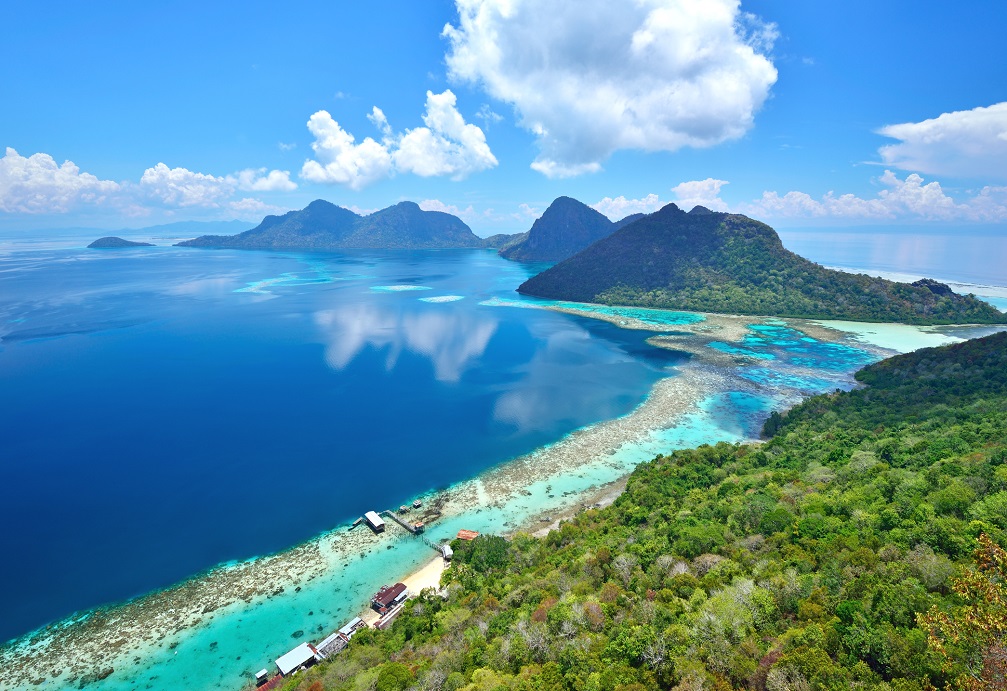


Located in Southeast Asia, Malaysia can be divided into Peninsular Malaysia, which lies between Singapore in the south and Thailand in the north, and the provinces of Sabah and Sarawak on the large island of Borneo (East Malaysia). While Peninsular Malaysia is above the equator, Borneo is under it. Interestingly, Borneo is shared between Malaysia, Indonesia (which calls it Kalimantan), and the tiny kingdom of Brunei. The Philippines lies to the north of Borneo. Most of Malaysia’s population lives in Peninsular Malaysia and Kuala Lumpur is also located there. The west and east coasts of Peninsular Malaysia are separated by the Titiwangsa mountain range. Borneo or East Malaysia is where most of the country’s rainforests are. Lately, it’s been a challenge for Malaysia to prevent the remaining rainforests from being converted into lucrative palm oil plantations.
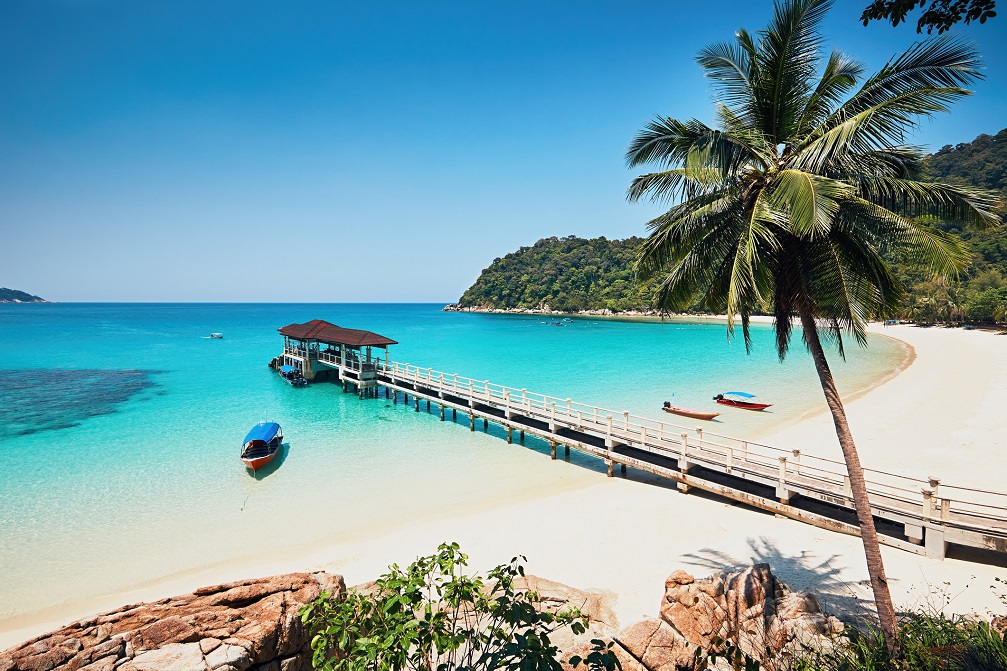


Being in the equatorial region, Malaysia has a warm tropical climate year-round. Monsoon comes in two seasons – May to September plus November to March. Be ready for intermittent showers or thunderstorms – in short, plenty of rain! It’s a smart idea to check on the weather if you are heading for the beaches. The west coast typically sees heavier rainfall in September and October. You might want to head to the east coast instead if you have a beach holiday in mind during this time. While temperatures and humidity are high in most parts of the country, the Cameron Highlands is an exception with its distinctly cooler climes, making it a unique destination in all of Malaysia.
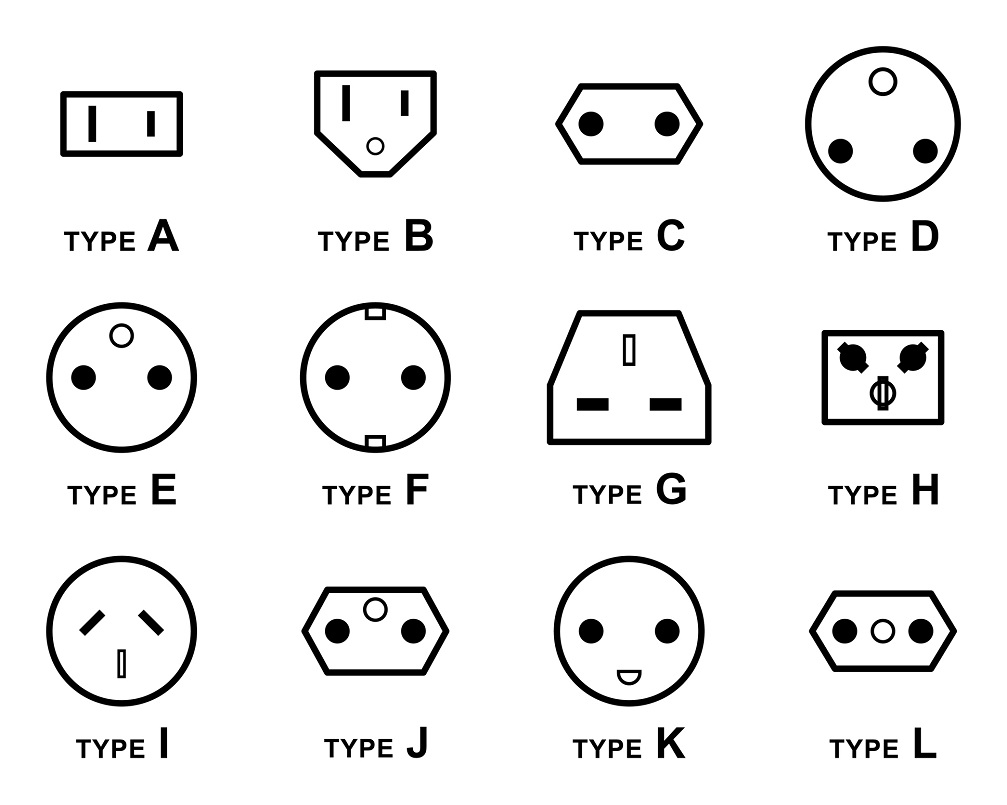


In Malaysia, electrical appliances work on a type G plug, which comprises three rectangular pins making a triangle. The country’s main power supply is 240V and 50Hz. You can use your appliances in Malaysia if the standard supply in your country is in the 220-240 V range, which is the case for Britain, the EU, and most Asian countries. Tiny deviations are taken into consideration by manufacturers, but if you have appliances from North America (where the voltage is usually between 100 and 127 Volts), you will have to pick up a voltage converter on arrival in Malaysia. Alternatively, a dual plug adapter and converter should do the trick.
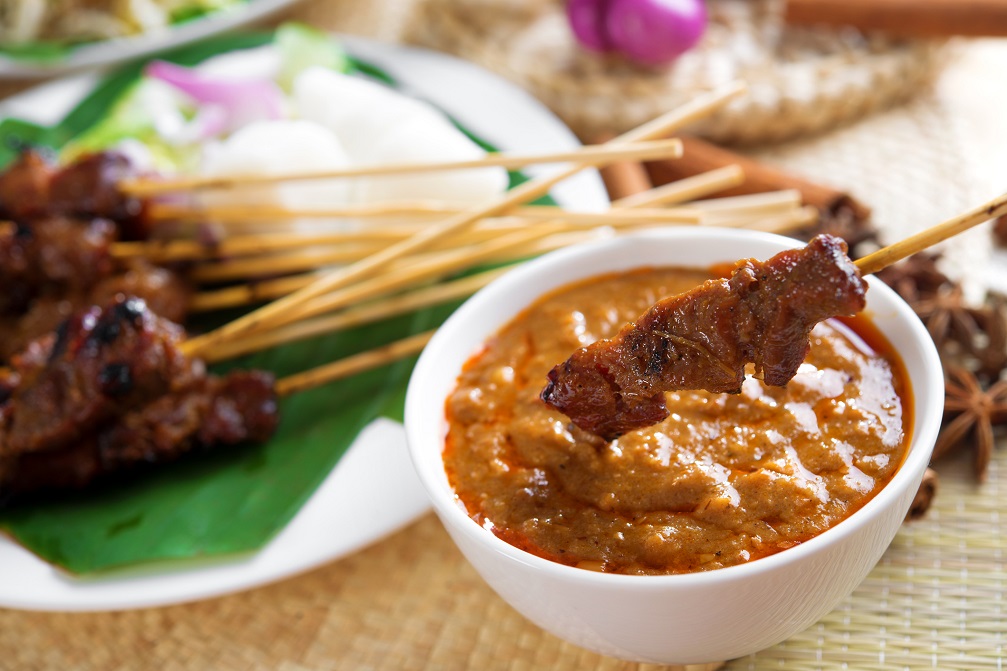


Spicy and wonderfully flavored, Malaysian cuisine combines the influences of many Asian cuisines. In fact, Malaysian cuisine can be broadly divided into traditional Malay cuisine along with cuisines from two other major food cultures – Indian and Chinese. And, of course, all these different cuisines have impacted each other as they have evolved in Malaysia over the centuries. So is Nasi lemak Malaysia’s national dish? The jury may be out on that but essentially, it is rice made in coconut milk; the accompaniments – from lamb curry to spicy sauce to hard-boiled eggs – are what really makes it tick. Also, dig into the Rendang, a meat dish which is cooked slowly till the spices go deep within; Laksa, an intensely spicy noodle soup; Bak kut teh, a delicious stew made of pork ribs; Hokkien mee, an extremely popular Malaysian twist on Chinese-type fried noodles; and the heavenly Sentul Satay — kebab-like meats barbequed on a stick, a street-food speciality.
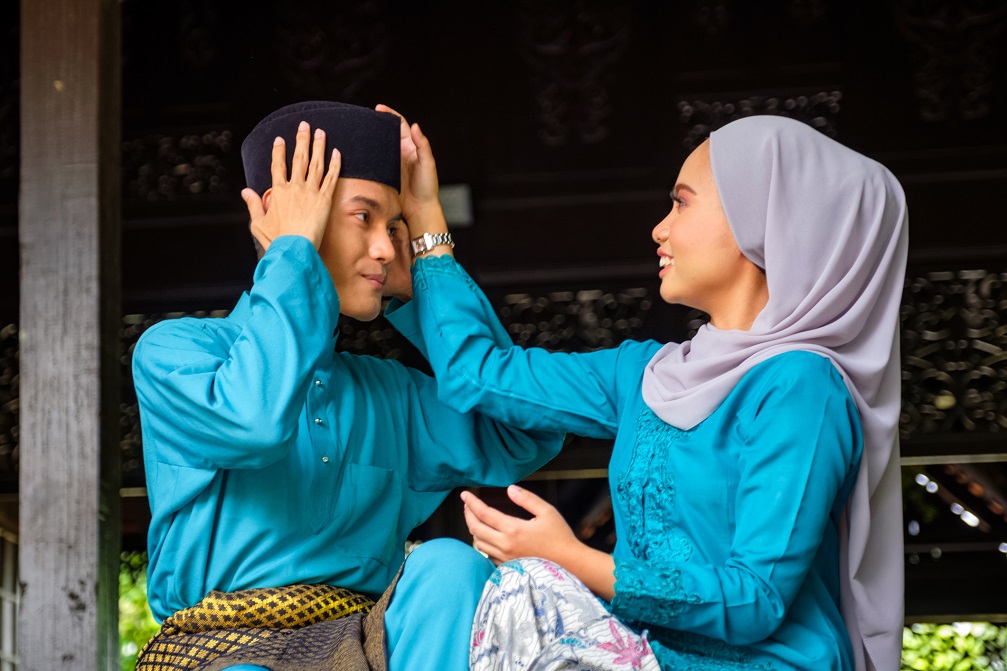


Traditional dresses vary along community lines in Malaysia. For Malay men, the traditional attire is the baju melayu, a loosely-fitted tunic which is often worn with a sarong called sampin and trousers. The traditional male hat is called the kopiah. Malay women who choose to dress traditionally wear the baju kurung, a full-sleeved blouse that reaches knee-length together with a pleated longish skirt called the kain and a headscarf. As a traveller, remember that Malaysia is a hot and humid country and you need to dress accordingly. Packing some light, natural fibres such as linen or cotton is a good idea. Malaysia is very welcoming to tourists and generally speaking, wearing t-shirts and shorts is fine. But avoid showing too much skin, especially in rural areas. Capital Kuala Lumpur is a very cosmopolitan city – and there is really no dress code as such. It rains frequently in Malaysia, so use clothes that can dry quickly. A rain jacket is a must-carry item. So are sunglasses and a hat.
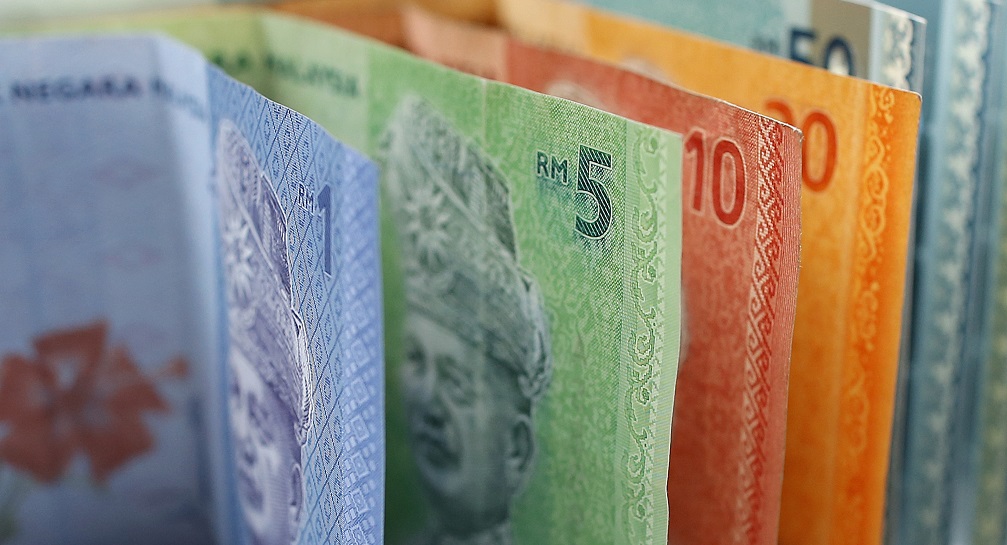


The currency of Malaysia is the ringgit (RM), and it is divided into 100 sen. 1USD is equal to 4.1 RM and 1UK pound sterling equals 5.8 RM. You must check the exchange rates at the time of travel. Banks in Malaysia are usually open from Monday to Friday and alternate Saturdays. In some Muslim-majority states, banks are shut on Fridays and open on Sundays. Most Malaysian cities, mid-sized towns, and tourist hotspots have ATMs. Money can be easily exchanged at kiosks run by licensed moneychangers. Always carry coins and small cash while on the move in Malaysia. Debit and credit cards are useful for posher establishments.
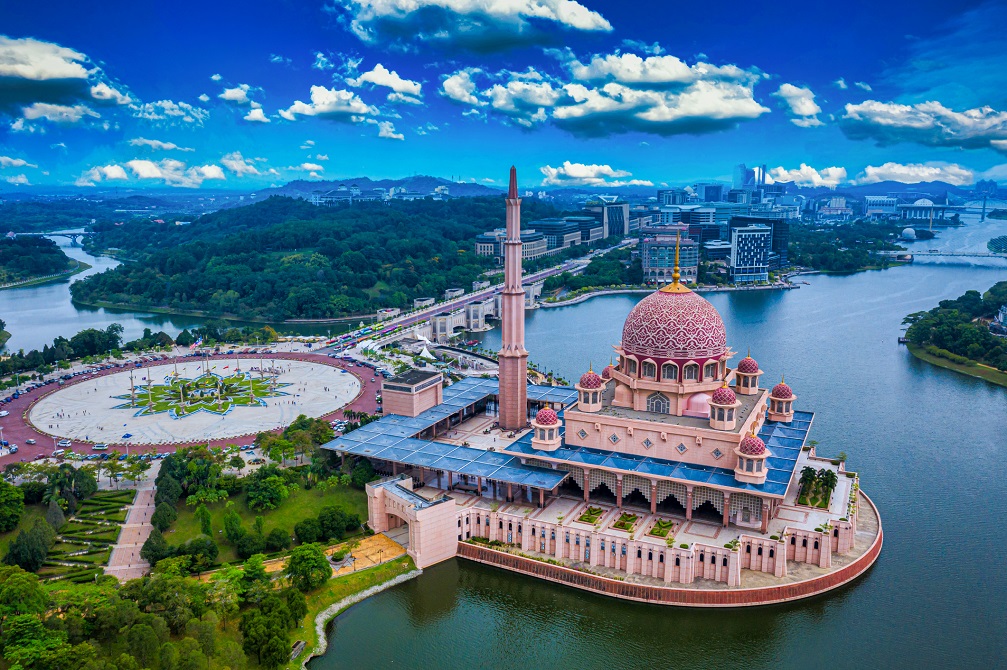


Malay is Malaysia’s national language and one of the two official languages, the other being English. More than 80 percent
of the population speaks Malay, and many Malaysians are familiar with English. Besides, a significant number of people speak Mandarin and Tamil. Overall, Malaysia is extremely diverse linguistically, with more than 130 languages spoken in some form. Malay itself has a number of regional dialects, with Bahasa Indonesia the most widely-spoken among them. Many city-dwellers speak Manglish, a cheeky blend of English and Malay, where few rules apply. You will hear many familiar words on Malaysian streets, depending on which part of the world you’re from, in English, Mandarin, Cantonese, Hokkien, Tamil and Hindi among other languages. Learning a few phrases of Malay is useful across Malaysia but in the tourist industry, almost everyone speaks English.
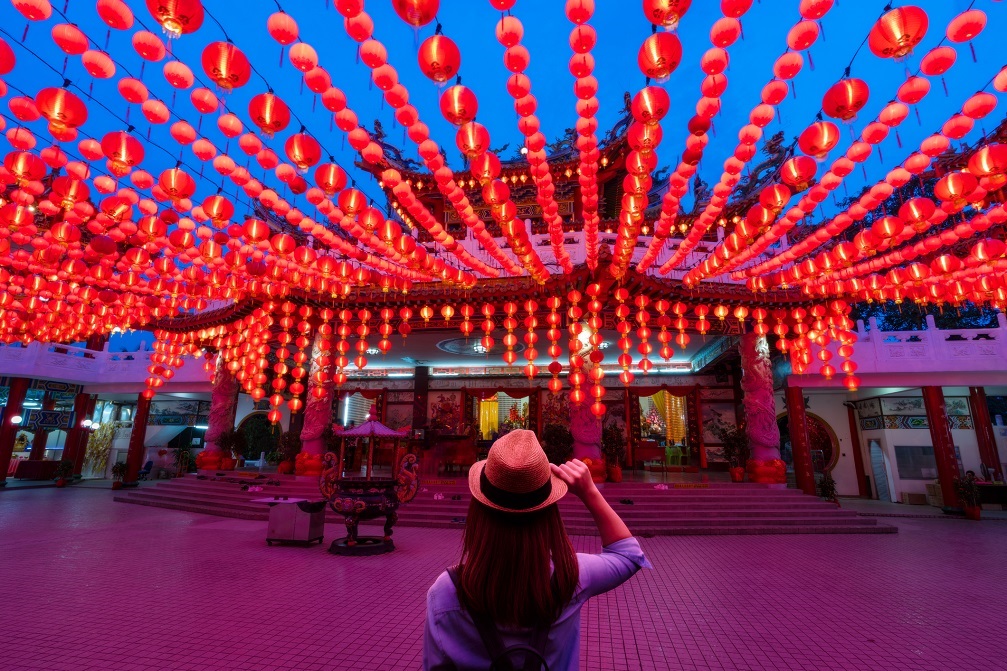


Malaysia celebrates its diversity, and most religious and ethnic groups have their own festivals that are colorful and inclusive in nature. Being a Muslim majority nation, the holy month of Ramadan is an important part of the annual calendar. Deepawali, the Hindu festival of lights, and the Chinese New Year are also some of the other key celebrations. If you are visiting a temple or a mosque, you’ll need to remove your shoes before stepping in. Though taking photos at religious places is usually allowed, take permission before doing so. If you are visiting a Malay home, taking off your shoes at the door is considered good etiquette. Malaysia is a fairly liberal place by Asian standards, but public display of affection, including kissing, may attract unwanted attention.
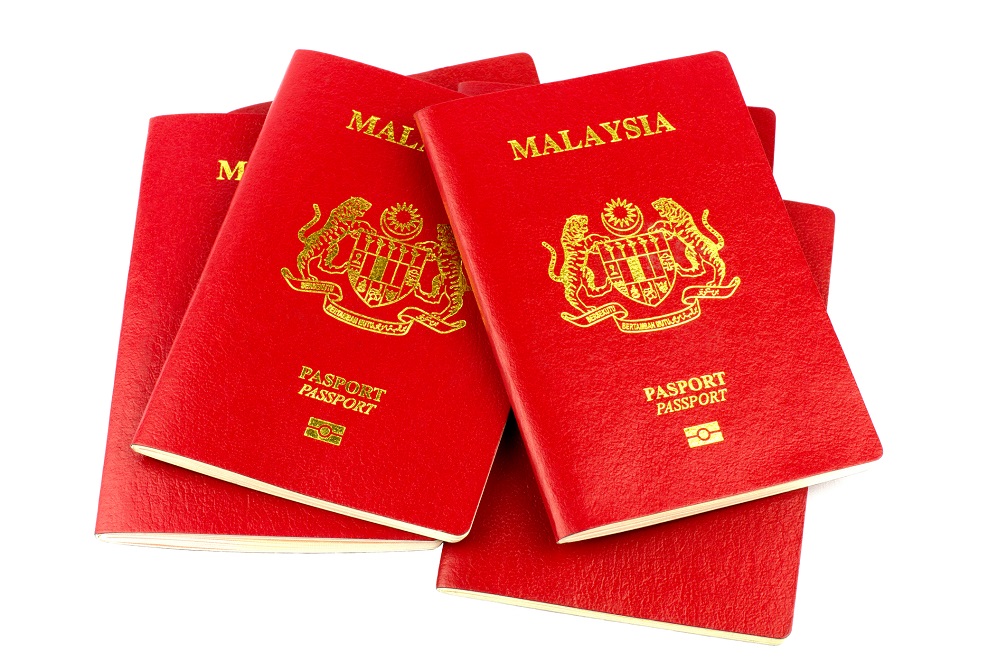


As a British national, you don’t require a visa to visit Malaysia. Normally, you can stay in Malaysia for 3 months from the date of arrival. If you want to stay longer, get a visa before you travel, from the Malaysian diplomatic mission. The Malaysian government has been cracking down on illegal immigration and overstaying for even a few days can lead to strict action, including fines, detention and deportation. Your passport is valid for at least 6 months from the date of entry into Malaysia. If you’re travelling between Peninsular Malaysia and Borneo (East Malaysia), you have to carry your passport. At your first port of entry in East Malaysia, don’t forget to get an entry stamp.



Malacca Straits Mosque ( Masjid Selat Melaka), It is a mosque located on the man-made Malacca Island near Malacca Town, Malaysia
‘Malaysia, Truly Asia’ is not just a clever tourism slogan but captures the cultural diversity of this Southeast Asian nation which in many ways is a microcosm of Asia. Many communities and peoples – from Malays and Chinese to Indians and indigenous groups – live in peaceful coexistence here, enriching the cultural, linguistic, and religious traditions and cuisines of this diverse land. As a traveler to Malaysia, you will be spoilt for choice when it comes to destinations.
There are primordial equatorial rainforests hosting a remarkable range of animal and plant life; tropical islands and beaches that wow visitors with their pristine beauty and world-class diving opportunities; the multicultural multitudes of capital Kuala Lumpur; the UNESCO World Heritage sites of Melaka and George Town that evoke half a millennia of trade and cultural exchanges in Southeast Asia; the distinctive charms of the Cameron Highlands with its trekking paths and quaint tea gardens – and much more. Malaysia is one of the original melting pots of the world, and the various influences are spectacularly evident in its cuisines and languages. The country is also easy on the pocket, and there is something for travelers of all budgets.



Located in Southeast Asia, Malaysia can be divided into Peninsular Malaysia, which lies between Singapore in the south and Thailand in the north, and the provinces of Sabah and Sarawak on the large island of Borneo (East Malaysia). While Peninsular Malaysia is above the equator, Borneo is under it. Interestingly, Borneo is shared between Malaysia, Indonesia (which calls it Kalimantan), and the tiny kingdom of Brunei. The Philippines lies to the north of Borneo. Most of Malaysia’s population lives in Peninsular Malaysia and Kuala Lumpur is also located there. The west and east coasts of Peninsular Malaysia are separated by the Titiwangsa mountain range. Borneo or East Malaysia is where most of the country’s rainforests are. Lately, it’s been a challenge for Malaysia to prevent the remaining rainforests from being converted into lucrative palm oil plantations.



Being in the equatorial region, Malaysia has a warm tropical climate year-round. Monsoon comes in two seasons – May to September plus November to March. Be ready for intermittent showers or thunderstorms – in short, plenty of rain! It’s a smart idea to check on the weather if you are heading for the beaches. The west coast typically sees heavier rainfall in September and October. You might want to head to the east coast instead if you have a beach holiday in mind during this time. While temperatures and humidity are high in most parts of the country, the Cameron Highlands is an exception with its distinctly cooler climes, making it a unique destination in all of Malaysia.



In Malaysia, electrical appliances work on a type G plug, which comprises three rectangular pins making a triangle. The country’s main power supply is 240V and 50Hz. You can use your appliances in Malaysia if the standard supply in your country is in the 220-240 V range, which is the case for Britain, the EU, and most Asian countries. Tiny deviations are taken into consideration by manufacturers, but if you have appliances from North America (where the voltage is usually between 100 and 127 Volts), you will have to pick up a voltage converter on arrival in Malaysia. Alternatively, a dual plug adapter and converter should do the trick.



Spicy and wonderfully flavored, Malaysian cuisine combines the influences of many Asian cuisines. In fact, Malaysian cuisine can be broadly divided into traditional Malay cuisine along with cuisines from two other major food cultures – Indian and Chinese. And, of course, all these different cuisines have impacted each other as they have evolved in Malaysia over the centuries. So is Nasi lemak Malaysia’s national dish? The jury may be out on that but essentially, it is rice made in coconut milk; the accompaniments – from lamb curry to spicy sauce to hard-boiled eggs – are what really makes it tick. Also, dig into the Rendang, a meat dish which is cooked slowly till the spices go deep within; Laksa, an intensely spicy noodle soup; Bak kut teh, a delicious stew made of pork ribs; Hokkien mee, an extremely popular Malaysian twist on Chinese-type fried noodles; and the heavenly Sentul Satay — kebab-like meats barbequed on a stick, a street-food speciality.



Traditional dresses vary along community lines in Malaysia. For Malay men, the traditional attire is the baju melayu, a loosely-fitted tunic which is often worn with a sarong called sampin and trousers. The traditional male hat is called the kopiah. Malay women who choose to dress traditionally wear the baju kurung, a full-sleeved blouse that reaches knee-length together with a pleated longish skirt called the kain and a headscarf. As a traveller, remember that Malaysia is a hot and humid country and you need to dress accordingly. Packing some light, natural fibres such as linen or cotton is a good idea. Malaysia is very welcoming to tourists and generally speaking, wearing t-shirts and shorts is fine. But avoid showing too much skin, especially in rural areas. Capital Kuala Lumpur is a very cosmopolitan city – and there is really no dress code as such. It rains frequently in Malaysia, so use clothes that can dry quickly. A rain jacket is a must-carry item. So are sunglasses and a hat.



The currency of Malaysia is the ringgit (RM), and it is divided into 100 sen. 1USD is equal to 4.1 RM and 1UK pound sterling equals 5.8 RM. You must check the exchange rates at the time of travel. Banks in Malaysia are usually open from Monday to Friday and alternate Saturdays. In some Muslim-majority states, banks are shut on Fridays and open on Sundays. Most Malaysian cities, mid-sized towns, and tourist hotspots have ATMs. Money can be easily exchanged at kiosks run by licensed moneychangers. Always carry coins and small cash while on the move in Malaysia. Debit and credit cards are useful for posher establishments.



Malay is Malaysia’s national language and one of the two official languages, the other being English. More than 80 percent
of the population speaks Malay, and many Malaysians are familiar with English. Besides, a significant number of people speak Mandarin and Tamil. Overall, Malaysia is extremely diverse linguistically, with more than 130 languages spoken in some form. Malay itself has a number of regional dialects, with Bahasa Indonesia the most widely-spoken among them. Many city-dwellers speak Manglish, a cheeky blend of English and Malay, where few rules apply. You will hear many familiar words on Malaysian streets, depending on which part of the world you’re from, in English, Mandarin, Cantonese, Hokkien, Tamil and Hindi among other languages. Learning a few phrases of Malay is useful across Malaysia but in the tourist industry, almost everyone speaks English.



Malaysia celebrates its diversity, and most religious and ethnic groups have their own festivals that are colorful and inclusive in nature. Being a Muslim majority nation, the holy month of Ramadan is an important part of the annual calendar. Deepawali, the Hindu festival of lights, and the Chinese New Year are also some of the other key celebrations. If you are visiting a temple or a mosque, you’ll need to remove your shoes before stepping in. Though taking photos at religious places is usually allowed, take permission before doing so. If you are visiting a Malay home, taking off your shoes at the door is considered good etiquette. Malaysia is a fairly liberal place by Asian standards, but public display of affection, including kissing, may attract unwanted attention.



As a British national, you don’t require a visa to visit Malaysia. Normally, you can stay in Malaysia for 3 months from the date of arrival. If you want to stay longer, get a visa before you travel, from the Malaysian diplomatic mission. The Malaysian government has been cracking down on illegal immigration and overstaying for even a few days can lead to strict action, including fines, detention and deportation. Your passport is valid for at least 6 months from the date of entry into Malaysia. If you’re travelling between Peninsular Malaysia and Borneo (East Malaysia), you have to carry your passport. At your first port of entry in East Malaysia, don’t forget to get an entry stamp.
Travel related news, information and inspirational articles and videos for travellers booking flights or holidays to Malaysia. Ask questions about travel in Malaysia and get answers from Malaysia experts
NEWS
Inspiration, Information and Travel Guides
MEET THE Malaysia EXPERTS
If you are looking to book a holiday to Malaysia or needs some help and advice planning travel to Malaysia then contact one of the UK based independent travel agents that specialise in Malaysia itineraries.
FEATURED VIDEOS
Your Travel Questions Answered
Ask any travel related question and get an answer from one of our experts that will provide you with an answer from their personal experience
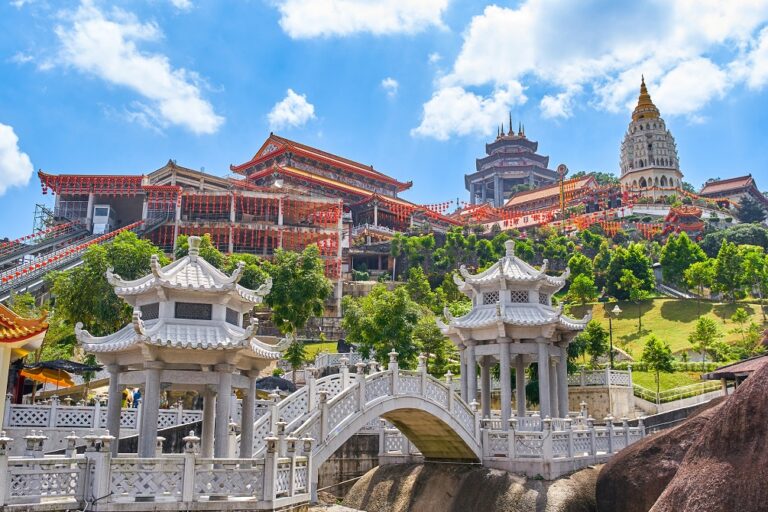

I am staying in Penang for two days and want to spend some memorable time here, could you please suggest some popular things that could be done in Penang.
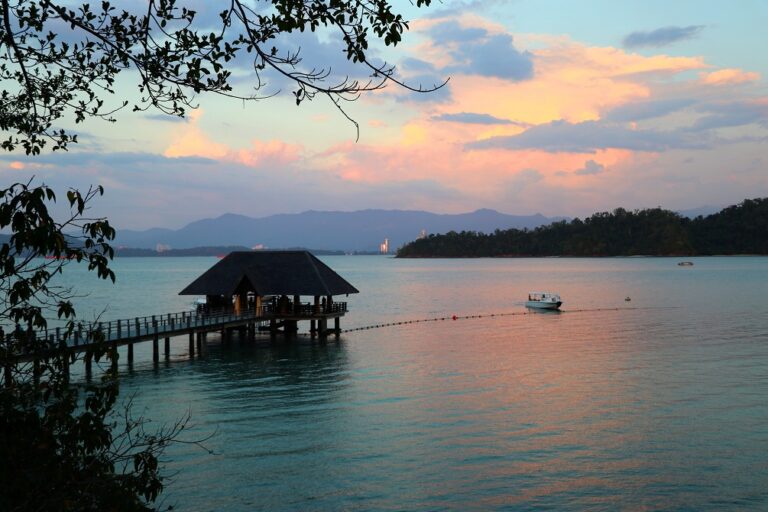

My fiance and I are planning to have our honeymoon in Malaysia and we're looking for a luxurious resort on one of the private islands there.
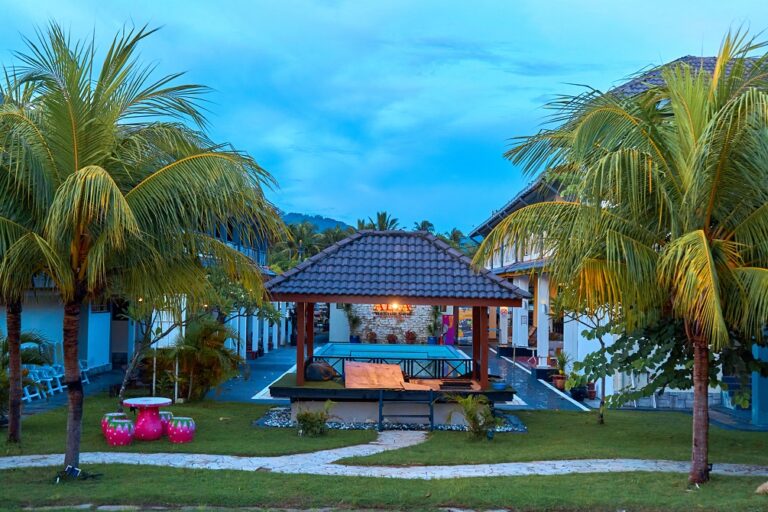

I’m planning to surprise my girlfriend for her birthday, so I am looking for a great romantic resort or villa in Malaysia. Somewhere relaxing or a little remote away from the city that’s by a beach would be great!
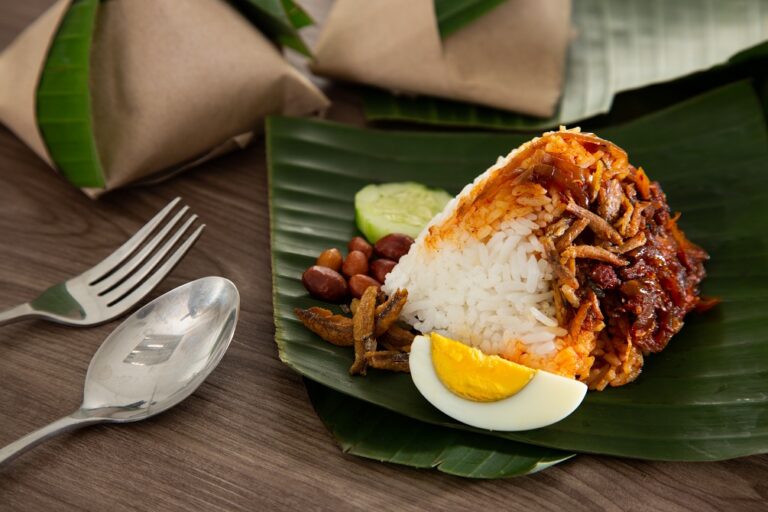

It’s my first time traveling to Malaysia and I have heard a lot of good reviews about their food so I’ve got to know which is the top 10 unique Malaysian must-have food to try.
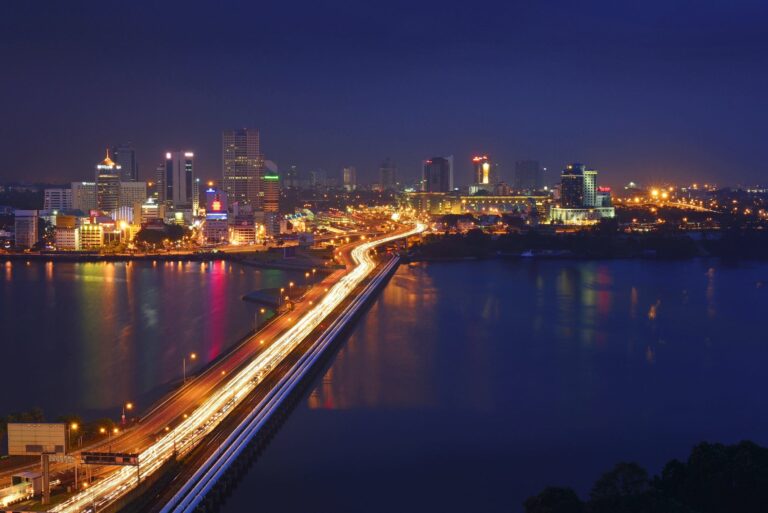


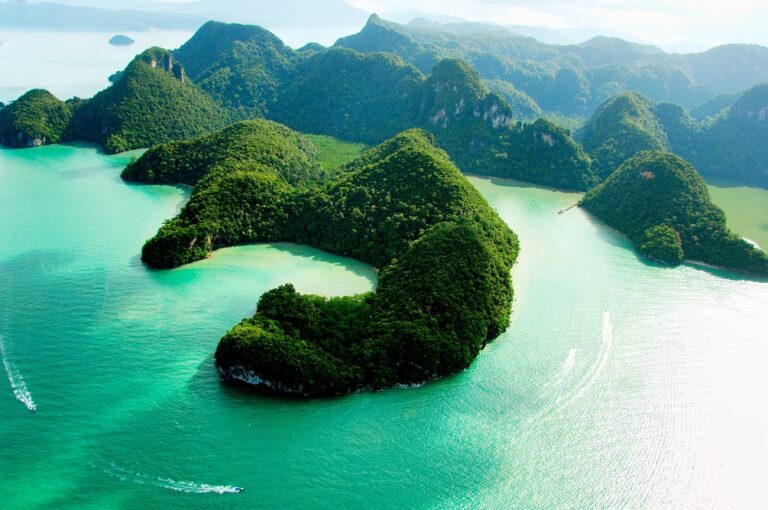

My friends and I are looking for the perfect tropical island destination in South East Asia. None of us have been to this part of the world yet, so we are hoping to get some good island recommendations which have plenty to offer in terms of recreational activities and sightseeing.
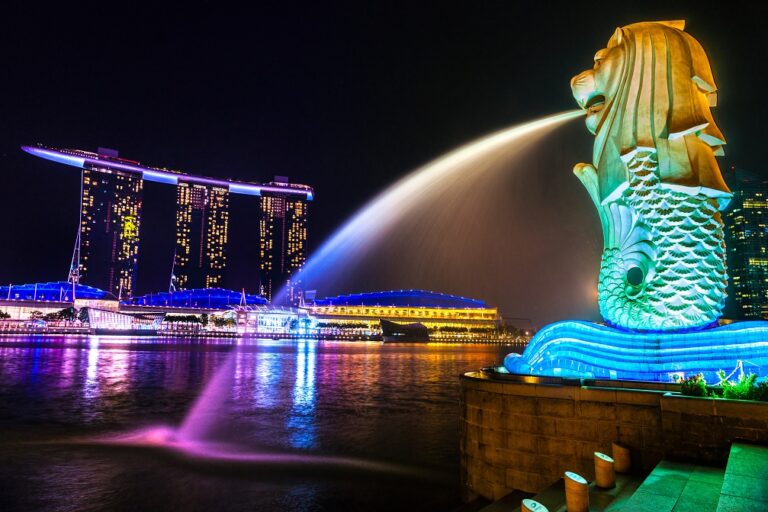

I’m planning a trip around Asia. I’d like to visit Singapore but looking into it, Singapore is a lot more expensive than other nearby countries, and I’m worried the visit won’t be viable with my budget. I’m not a fan of hostels either. Would it be possible to visit Singapore on a budget?
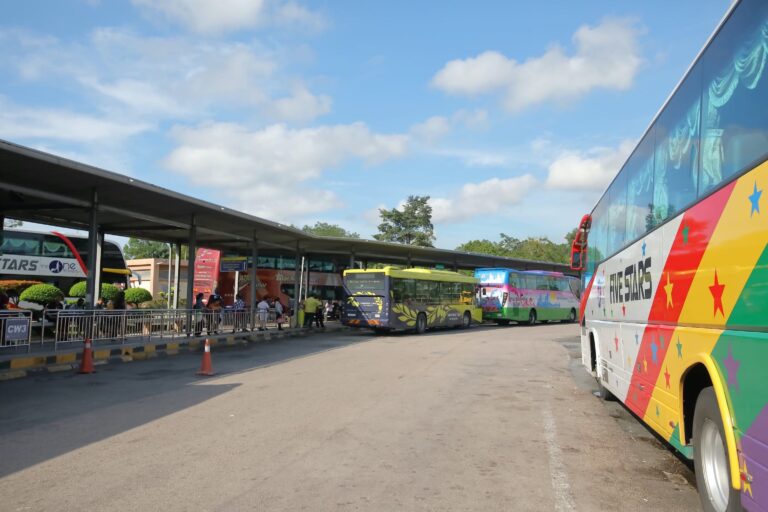

I will be travelling to Malaysia at the end of the year and want to spend New Year’s Eve in Singapore. I have found cheap flight deals to Malaysia but would like alternative ways to reach Singapore. I am looking for advice on the best way to travel from Malaysia to Singapore besides taking a flight. What is the best way to travel to Singapore? Any bus or scenic train from Malaysia to Singapore?



I’m planning on visiting Singapore soon, for around four days en route to Australia. I’ve always wanted to visit Kuala Lumpur. Is it possible to go on a day trip from Singapore to Kuala Lumpur? What’s the best way to go about this?
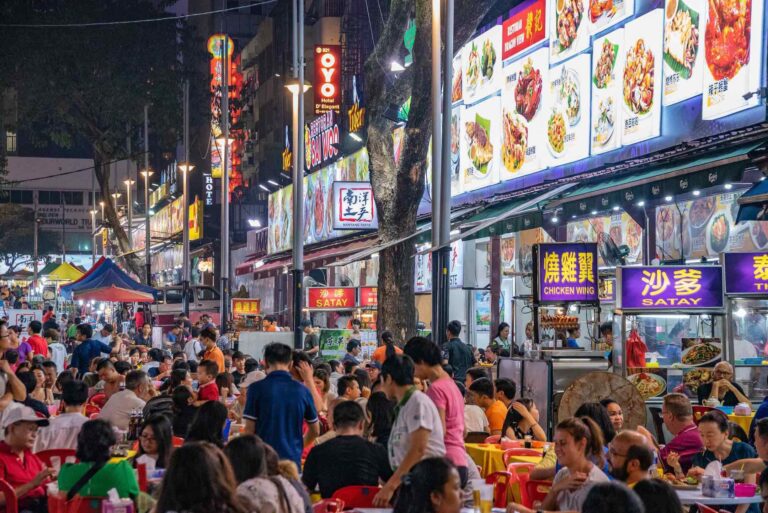

We’re a family of absolute foodies who wants to travel to Malaysia. We have heard it’s paradise for food-lovers, and especially Penang! Now, I would like to know more about the food scene there since it is a muslim country – Can I find restaurants serving pork in Malaysia?

